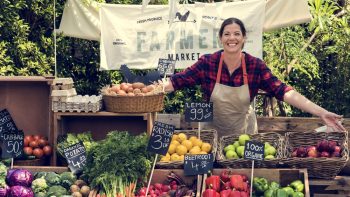
Farmers markets have long been celebrated for their vibrant displays of locally grown, seasonal produce. These community hubs offer a diverse array of fresh fruits, vegetables, and artisanal products.
But did you know that farmers markets also play a crucial role in making healthy, fresh food accessible to individuals and families who rely on food stamps? In this article, we’ll explore how food stamp recipients can utilize their benefits at farmers markets, the benefits of choosing seasonal and local produce, and why this information is important for everyone.
Using Food Stamps at Farmers Markets
One of the significant advantages of farmers markets is that they are increasingly accepting food stamps, officially known as the Supplemental Nutrition Assistance Program (SNAP). This initiative bridges the gap between low-income individuals and fresh, nutritious food choices.
When SNAP benefits are spent at farmers markets, it brings benefits not only to the recipients but also local farmers and the community as a whole.
SNAP recipients can visit participating farmers markets, where they can use their Electronic Benefit Transfer (EBT) card. This card operates much like a debit card, and is loaded with a recipient’s SNAP food allotment on a monthly basis. This system makes it convenient for individuals and families to access high-quality produce and support local agriculture.
You can search for a farmers market near you by using the USDA’s Farmers Market Directory.
Seasonal and Local Produce
Farmers markets shine a spotlight on the beauty of seasonal and local produce. Unlike large grocery stores that source fruits and vegetables from all over the world year-round, farmers markets offer what’s in season in your region.
This practice carries numerous benefits:
- Freshness and Taste: Seasonal produce is typically harvested at its peak ripeness, ensuring superior flavor and nutritional value compared to fruits and vegetables that have traveled long distances.
- Support for Local Economy: Buying local supports small-scale farmers, helping them sustain their businesses. This, in turn, bolsters the local economy and encourages more sustainable agricultural practices.
- Environmental Benefits: Reduced transportation of local produce means fewer carbon emissions and a smaller carbon footprint, contributing to a healthier planet.
- Connection to Food Sources: Farmers markets offer a unique opportunity for consumers to connect with the people who grow their food, fostering a sense of community and trust.
- Cost-Effective: Seasonal produce is often more affordable because it doesn’t require the resources needed to grow food out of season or to transport it long distances.
Importance for Everyone
The information about using food stamps at farmers markets and choosing seasonal and local produce isn’t just relevant for SNAP recipients; it’s essential knowledge for everyone. Here’s why:
- Nutritional Benefits: Seasonal and locally grown produce tends to be more nutritious, providing a wider range of vitamins, minerals, and antioxidants. By choosing these options, you can often enhance your diet’s nutritional value.
- Community Support: Supporting local farmers and markets fosters a stronger sense of community. When local economies thrive, the entire community benefits.
- Environmental Stewardship: Opting for seasonal and local produce reduces the environmental impact associated with food transportation, contributing to a more sustainable future.
- Educational Value: Farmers markets provide a unique educational experience for all ages. They offer an opportunity to learn about different varieties of fruits and vegetables, cooking methods, and the importance of a diverse diet.
Farmers markets aren’t just places to shop for fresh, delicious produce; they are also key players in making nutritious food accessible to all, including those who rely on food stamps. By using SNAP benefits at farmers markets and choosing seasonal and local produce, we can foster healthier individuals, stronger communities, and a more sustainable world.
So, whether you’re a SNAP recipient or simply someone who cares about their food choices, consider making your next trip to a farmers market a step towards a healthier, happier future for all.
By Admin –



